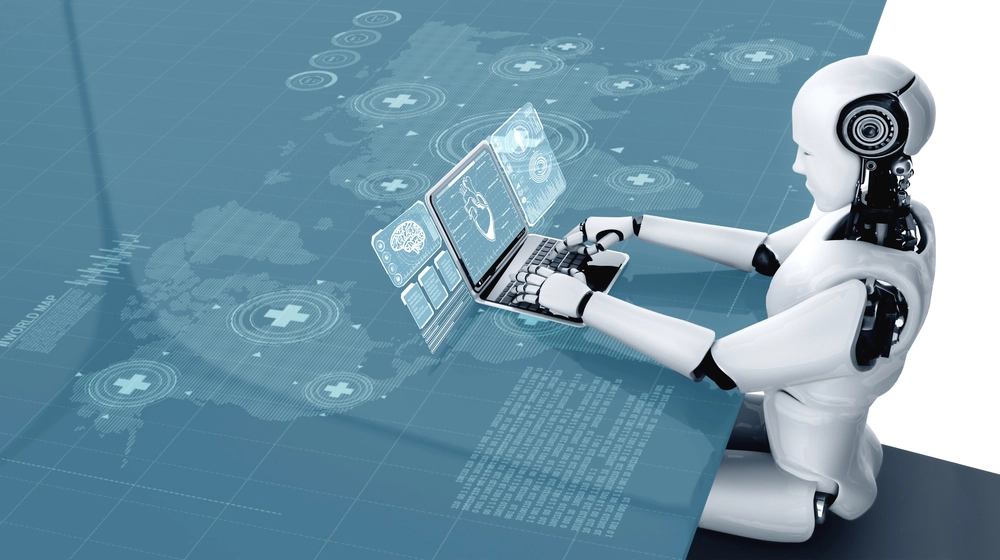Home |
What are the Trends in ICT: Technology Trends for 2025
November 7, 2024


As we approach 2025, understanding the evolving landscape of Information and Communication Technology (ICT) is essential for your business or organization. The integration of various technologies and the emergence of innovative solutions are transforming how you interact, operate, and tackle challenges. This article explores current technology trends, the key drivers behind these changes, and emerging trends that are set to shape the future of ICT.
What is ICT and Its Importance?
Information and Communication Technology (ICT) encompasses a wide range of technologies that combine telecommunications, computers, and essential software solutions, allowing you to access, store, transmit, and manipulate data efficiently. The importance of ICT lies in its ability to enhance communication and collaboration across various sectors, providing crucial tools for effective information management. As the digital landscape evolves, ICT plays an increasingly vital role in driving economic growth, societal development, and global connectivity, enabling both you and your organization to thrive in a connected world.
Key Drivers of Change in ICT
Several key drivers influence the current technology trends, including the rapid advancement of artificial intelligence (AI), the growing demand for data analytics, and an increased focus on cybersecurity. The push for sustainability and energy efficiency is also reshaping technological development, as you strive to minimize your environmental impact. Additionally, the COVID-19 pandemic has accelerated digital transformation, compelling businesses to adopt remote work solutions and digital tools. The convergence of technologies such as the Internet of Things (IoT), blockchain, and cloud computing is creating new opportunities and challenges within the ICT sector.
Future ICT Trends
Looking ahead, you will encounter several emerging trends poised to significantly influence the future of ICT. The rise of generative AI is transforming how you interact with customers and manage operations. Quantum computing is gaining momentum, promising to revolutionize data processing capabilities. The ongoing shift towards hybrid and remote work environments is driving significant investments in collaboration tools and cloud services. Furthermore, the increasing demand for robust cybersecurity measures is leading to innovations in threat detection and response technologies, ultimately redefining the technological landscape and shaping your business operations for years to come.
Top Trends in ICT
1. Artificial Intelligence and Machine Learning (AI/ML)


It’s important to recognize that integrating AI into your processes is becoming a vital strategic trend. Gartner projects that the global AI software market will grow by 20.4% by 2027, indicating significant opportunities for businesses like yours. By leveraging artificial intelligence, you can streamline operations through automation, enhancing efficiency and reducing operational costs. AI-powered tools such as chatbots and virtual assistants can transform your customer service, delivering immediate responses and support to improve user experiences. Moreover, predictive analytics will empower you to analyze data patterns, enabling informed decision-making. The rise of agentic AI, which can autonomously execute tasks, will also reshape traditional business models, prompting you to establish robust governance frameworks to ensure ethical and responsible usage of these powerful technologies.
2. Quantum Computing


Photo by charlesdeluvio on Unsplash
Quantum computing offers a monumental shift in how you understand and implement trends. By harnessing the principles of quantum mechanics, this emerging technology allows organizations to perform computations at unprecedented speeds. Unlike classical systems that use bits as the smallest unit of data, quantum computers utilize qubits, which can be in multiple states simultaneously due to superposition. This unique characteristic enables you to tackle complex problems that are currently beyond the reach of traditional computing, making quantum computing a vital tool for sectors like cryptography and data modeling.
3. Cybersecurity


In 2025, the cyber threat landscape presents you with increasingly sophisticated challenges, with attacks targeting critical infrastructure and sensitive data. Cybercriminals are leveraging advanced technologies such as AI and machine learning, which make their methods more difficult to detect and counter. The shift to remote work has expanded your organization’s attack surface, increasing vulnerability to breaches.To combat these evolving threats, it’s essential for you to implement comprehensive cybersecurity strategies. Learn more about what a company should do after a data breach to help reinforce incident response, threat intelligence, and employee training measures that safeguard assets and ensure resilient business operations
4. Healthcare Digital Transformation


Photo by National Cancer Institute on Unsplash
Telemedicine and digital health solutions are transforming the healthcare industry, making healthcare more accessible, efficient, and patient-centered for you. With the rise of ICT, you may notice that hospitals and healthcare providers are adopting telemedicine platforms, wearable health devices, and electronic health records (EHRs) to improve your patient care and streamline operations. According to research, the global telemedicine market is expected to grow at a CAGR of 18.37% from 2024 to 2030, which could enhance your healthcare experience significantly.
5. 5G Connectivity


Photo by Frederik Lipfert on Unsplash
The rollout of 5G technology has unlocked unprecedented levels of connectivity, allowing you to handle vast amounts of data at faster speeds. For businesses, this means more robust connections for remote work, seamless video conferencing, and enhanced IoT deployments that can benefit you directly. As 5G continues to expand, it will open the door to new opportunities in telemedicine, smart cities, and autonomous vehicles, which could improve the way you interact with technology in your daily life.
6. Internet of Things (IoT) Expansion


Photo by Jakub Żerdzicki on Unsplash
The IoT has grown immensely, connecting billions of devices worldwide—from smart home gadgets to industrial sensors that you might use. This trend allows you to gather real-time data, automate tasks, and monitor operations remotely. In sectors like manufacturing, logistics, and healthcare, IoT is becoming essential for optimizing efficiency and enhancing decision-making. In the coming years, you can expect IoT networks to become more secure and energy-efficient, making your interactions with these devices even better.
7. Edge Computing


Edge computing brings data storage and processing closer to you, reducing latency and bandwidth usage. This trend is particularly relevant in industries like manufacturing, transportation, and telecommunications, where real-time data processing is critical for your needs. By minimizing the data’s journey to and from the cloud, edge computing also improves data privacy and lowers costs, which can enhance your overall experience with technology. As IoT devices continue to grow in number, edge computing will play an increasingly essential role in meeting your demands.
8. Blockchain Technology


Photo by GuerrillaBuzz on Unsplash
Initially popularized by cryptocurrencies, blockchain is transforming the ICT landscape, offering you applications in various industries such as finance, healthcare, and supply chain management. With blockchain, you gain a decentralized and secure way of recording transactions, which can be particularly useful for digital identities, smart contracts, and tamper-proof data records. As you prioritize transparency and security in your business practices, blockchain solutions will be crucial for secure data sharing and process automation.
9. Autonomous Vehicles


Photo by Timo Wielink on Unsplash
The development of autonomous vehicles is one of the most exciting trends in ICT. These vehicles leverage AI, machine learning, and advanced sensor technologies to navigate and operate without human intervention. According to a report from Allied Market Research, the global autonomous vehicle market is projected to reach $556.67 billion by 2026, driven by advancements in AI, safety regulations, and demand for driverless technologies. Autonomous vehicles have implications for transportation, logistics, and urban planning, offering potential benefits such as reduced traffic accidents, lower emissions, and improved delivery efficiency.
Guidelines for Navigating Technology Trends
Strategic Planning for Tech Adoption
Strategic planning for technology adoption involves assessing your organizational goals, current capabilities, and market trends to make informed decisions. You should conduct thorough evaluations of emerging technologies to identify those that align with your strategic objectives. Developing a roadmap for implementation, including timelines, resource allocation, and risk management, is essential for your successful adoption. Additionally, fostering a culture of innovation within your organization is crucial; encourage experimentation and adaptability to stay ahead in a rapidly changing technological landscape as you approach 2025.
Measuring Innovation Impact
Measuring the impact of innovation is critical for you to evaluate the effectiveness of your technology investments. Establish key performance indicators (KPIs) to assess the success of your technology initiatives, including metrics related to productivity, customer satisfaction, and return on investment. Regularly review and analyze these metrics to make data-driven decisions and adjust your strategies as needed. Moreover, fostering a feedback loop with stakeholders can provide valuable insights into how innovations affect users and the broader community, ensuring that tech trends align with user expectations.
Future-Proofing Your ICT Strategy
Future-proofing your ICT strategy involves anticipating changes in technology, market dynamics, and user needs to ensure long-term sustainability. Invest in continuous learning and development to equip your workforce with the skills necessary to adapt to new technologies. Embracing flexibility and agility in your operations allows you to pivot quickly in response to emerging trends. Furthermore, fostering partnerships with technology providers and industry experts can enhance your ability to innovate and remain competitive in the face of disruption, ultimately shaping your future success in the ICT field.
Final Thoughts
These trends in ICT represent exciting advancements that can drive business growth, efficiency, and innovation. Staying updated on these trends is critical, as it not only enables businesses to remain competitive but also prepares them to lead in their industries. Embracing these technologies is more than a strategic advantage—it’s a fundamental step toward thriving in a digital-first future.
